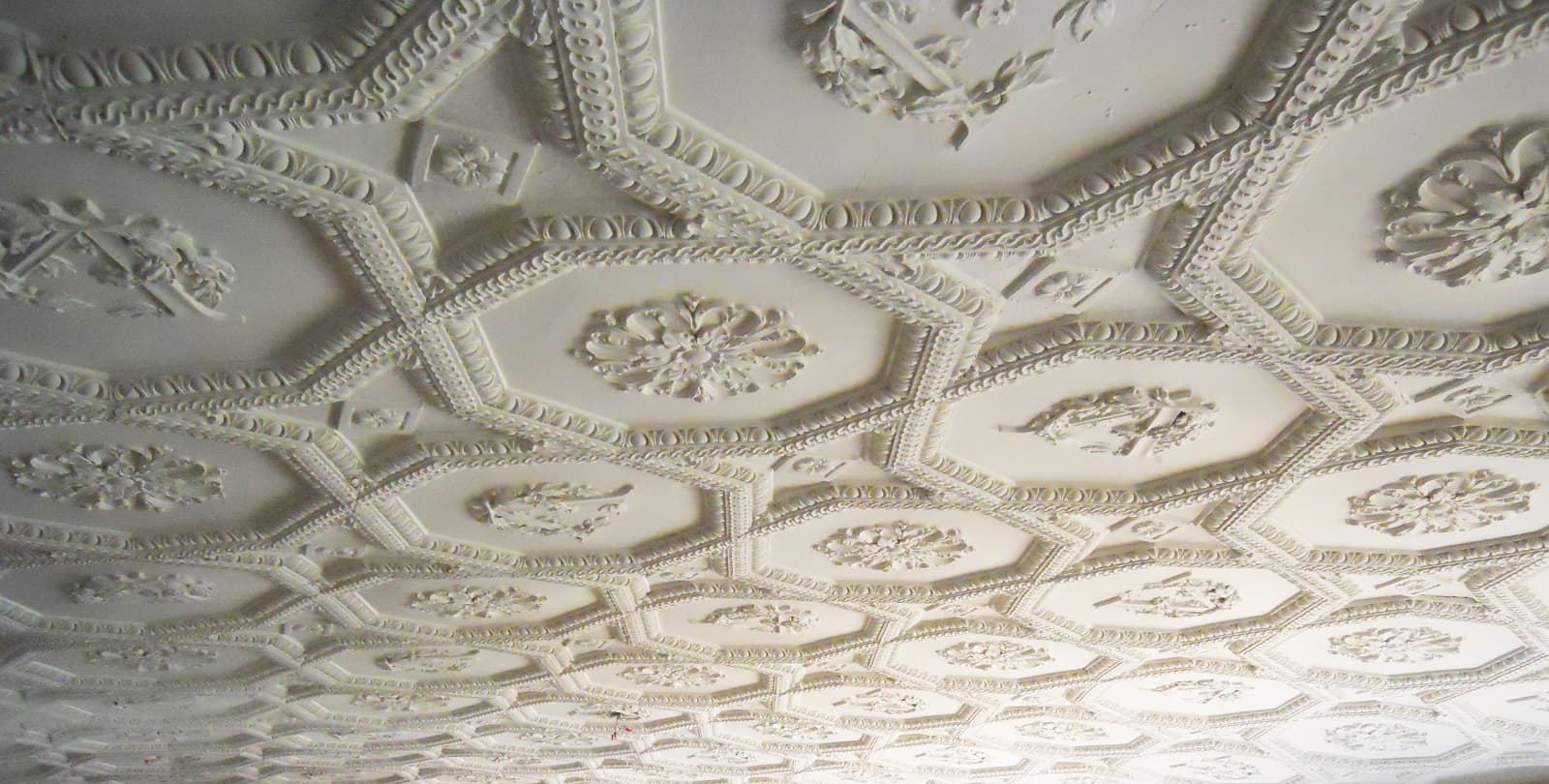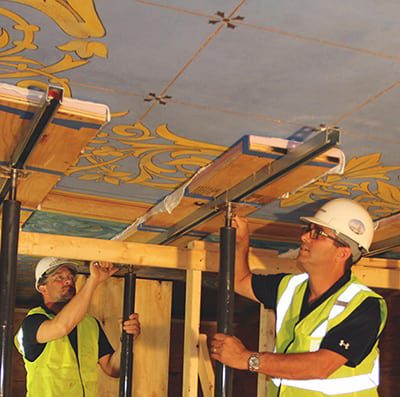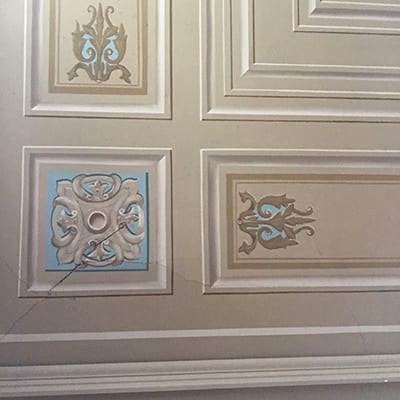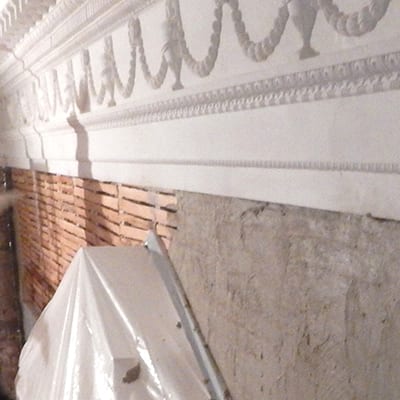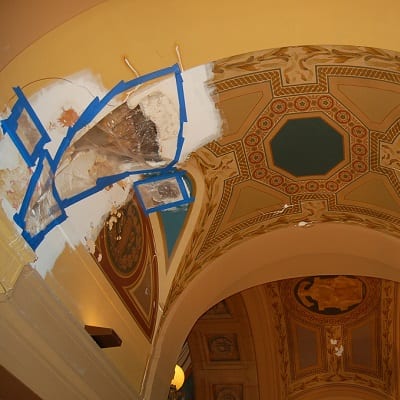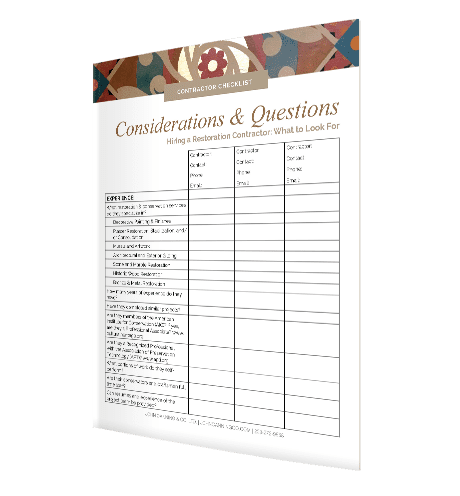Experience:
Having an extensive CV is an important first step in assessing if there is a potential match between any given expert and your project needs. Years of experience and a quality apprenticeship are good indicators you are working with an established plaster specialist. Similarly, it is important to review the experience of those working alongside the master plasterer to determine what skills they have. Both a curriculum vitae, a portfolio of past projects, and both trade and client recommendations are the best tools to determine both the extent of professional experience and the quality of that experience.
Familiarity:
Being familiar With your type of plaster: while possessing extensive experience is perhaps the key factor is determining the initial credibility of a restoration specialist, it is important to check that they have considerable experience with your type of plaster. In past blogs we have discussed different types of plaster (lime, horse hair, scagliola, ornamental, etc.) so make sure that the type of plaster you need repaired matches their skill set. It might be hard as a layman to know what kind of plaster you have, so consulting with a general plasterer is a good starting point; moreover, they might have specific trade recommendations for you.
Diverse Portfolio:
Carefully review their project portfolio and determine if they have specific or broad experience. Often, damage to historic plaster will involve restoring both flat plaster surfaces and ornamental plaster surfaces. It is important that the consulting expert be able to restore both simultaneously. Moreover, if an expert’s portfolio includes restoring simplistic plaster shapes but your project involves, extensive, intricate designs, there may not be a perfect match.
Understanding Your Needs:
Whenever you consult an expert it can very reassuring to know they are listening to what you are saying and prescribing a restoration plan based on both the needs of the building and other factors you have given them.
Personalized Plans And Reports:
Before any work is done, a project bid and proposal, often containing sketches, colors, and scientific/historic research, should be submitted to the preservation committee. Having plans drafted, stipulating the scope of the work and the means to achieve it, ensures that everyone is on the same page about what is being done, where, and over what period of time.
Scientifically And Historically Backed Restoration Plan:
Situations arise causing such catastrophic damage which results in total, or near total, plaster destruction. In such an instance, determining the original decoration of a space can be near impossible by simply reviewing intact plaster work. Often professionals will employ both scientific testing and historic research to help build a model for what the space originally looked like. If too little information is available (print, photographic, remaining plaster) experienced plasterers can fall back on their knowledge of the time period, to help create a historically accurate space.
Membership In Professional Societies:
Professionals belonging to both local and national preservation societies and committees take an oath to do no harm and exercise only the highest standards when completing a project.
Affordability:
Maintaining a budget is one of the hardest parts of pulling off a successful renovation. Perhaps your budget is too small for the scale of the work needed. A professional is willing to work with you to help identify a phased approach, where the whole project can be divided into two or three smaller phases, allowing for continued fundraising efforts.
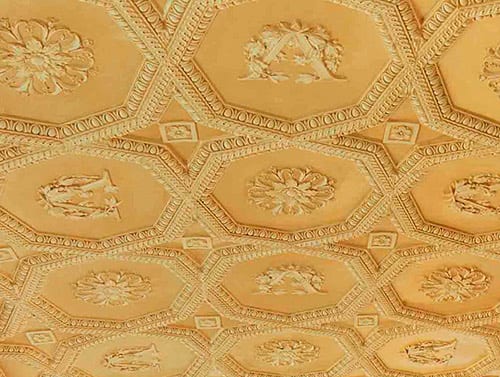
Selecting a repair expert can be a daunting process. Looking for professionals that fulfills the previously mentioned qualities will help to ensure that the plaster specialist you hire will maintain high standards and have the experience needed to complete the project. Working with fully licensed contractors is paramount—make sure that all permits are pulled prior to starting work, and never agree to work with individuals without credentials and always follow-up on references.

